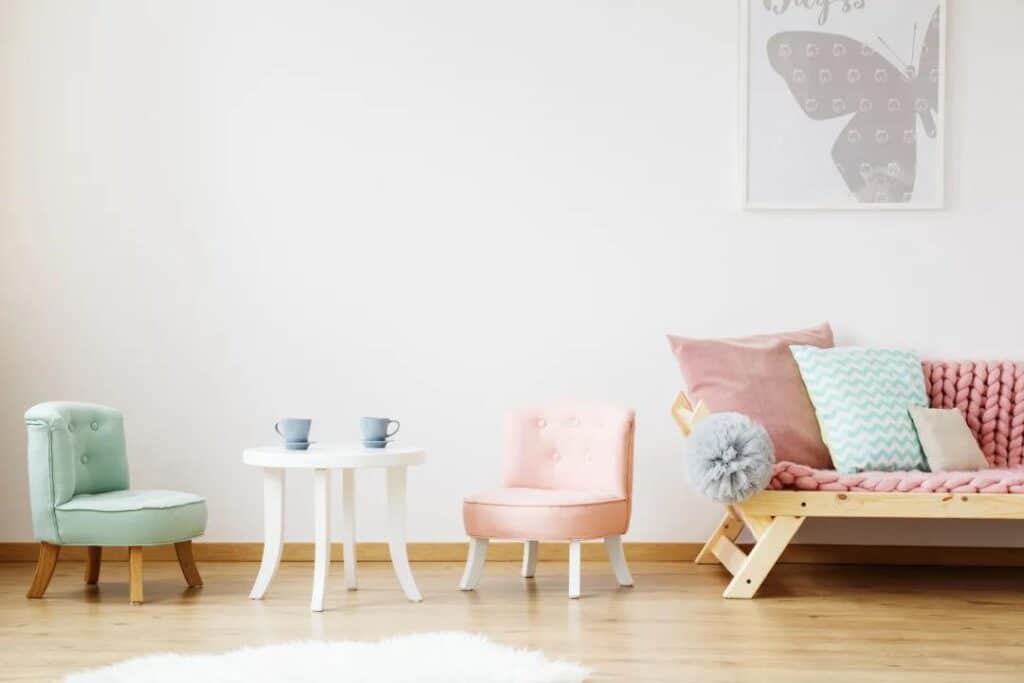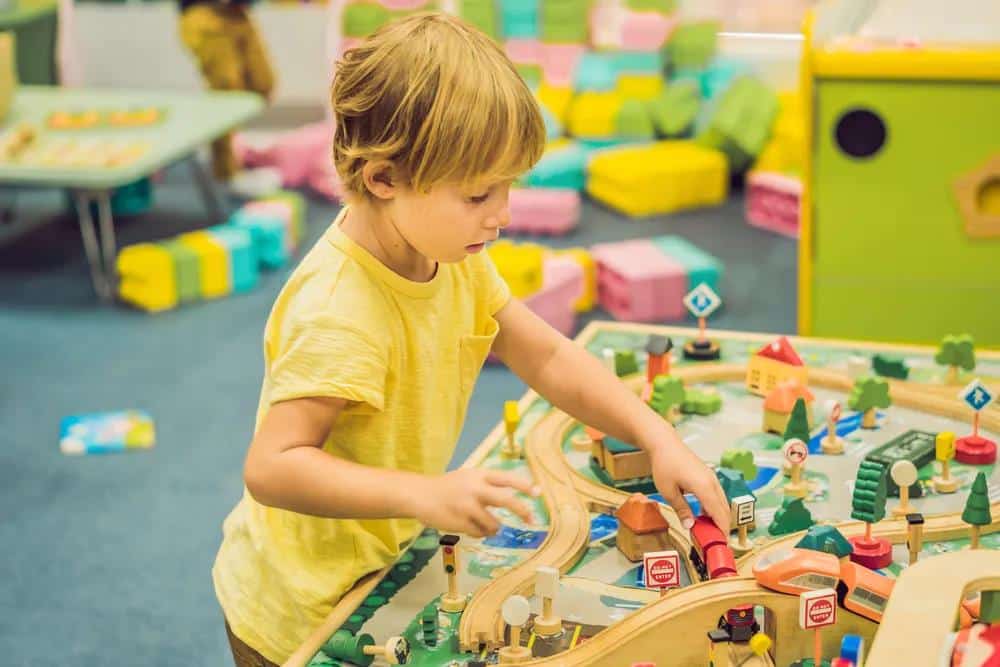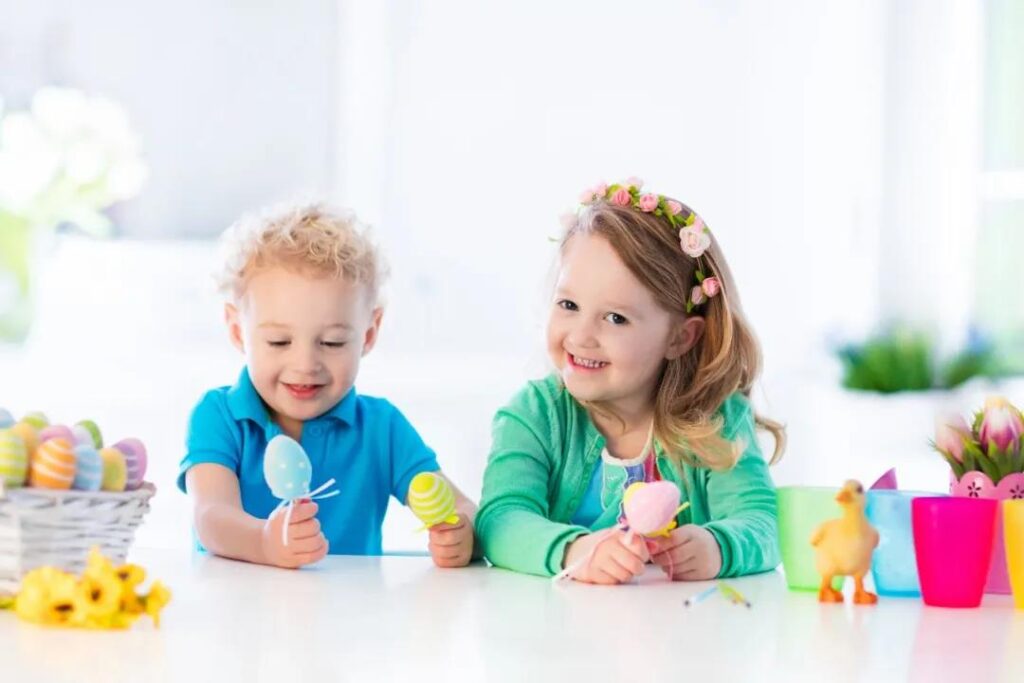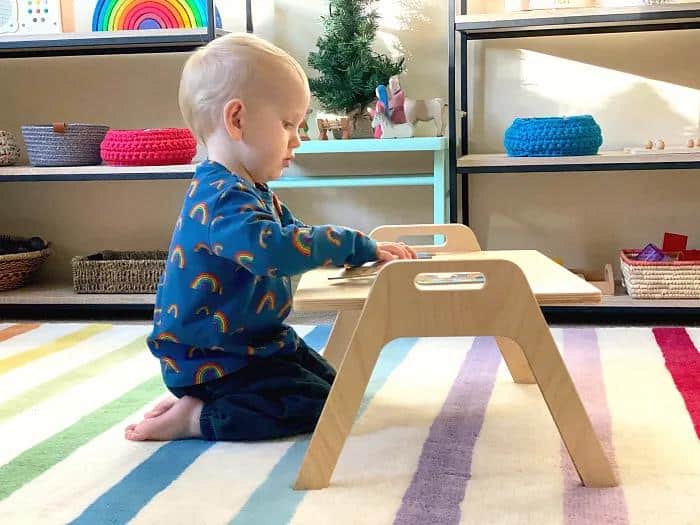When it comes to parenting, many families with young children are turning to the Montessori method. After all, it’s an approach that treats children as autonomous beings and gives them the respect they deserve. But how can we make room in our homes for our children without turning the place into a giant toy box? This list of seven helpful tips will help you get on the right path.

1、A child-friendly shelf or cabinet in the kitchen
This is one of the easiest ways to encourage your child’s independence and show that you trust them. From the time your child is a toddler until they can reach and use everything an adult does, set aside a small cabinet or drawer in your kitchen for them. Here you can keep child-sized plates, bowls, cups, silverware, and even some napkins. This will allow your children to have what they need when they need it. You don’t need to stop what you are doing to help them, they can feel good about doing something for themselves.
Want to take it a step further? Keep pre-distributed snacks in a cupboard for your child to access whenever he or she needs them. Some families also designate an area of the refrigerator for this purpose, as well as a small water bottle with water or milk that can be easily poured by little hands.

2、Consider adding small details to the entrance of your home
For families with young (and older!) children’s families, getting out the door in the morning can be one of the most rushed and sometimes stressful times of the day. Adding a few gadgets to your home’s entryway can help make everything run more smoothly.
Consider your child’s height and dedicate a hook or two near the door for them to store bits and pieces of clutter to prevent them from leaving the house if they forget something. Put a small box or cabinet they can toss their shoes in so they can be stored away, kept tidy, and easily found when needed. We have even seen some families hang a small mirror in the same area at the height of the child. Taking these steps will help your child develop a sense of responsibility, keep your home organized, and give us some relief from those crazy busy mornings.

3、Put most of the toys away
Even if you are careful not to buy too many toys for your kids (which is a feat in itself), there will always be gifts from family, party favors, and the many unpredictable little treasures that kids collect. So how do we manage all this stuff?
When your child is at an age where they can understand some insightful ideas, it’s a good idea to talk to them about waste and consumption, and then seek their help in managing those toys. Until then, observe the toys your child is playing with, determine what they actually use or like, and then rotate toys based on what you notice. Avoid bottomless toy boxes and instead choose to use low shelves for storage to make it easier to see and manage items.

4、Place a basket of books at your fingertips
Reading has many benefits for children, so it’s important to keep books close at hand wherever you are.
For example, keep a basket of seasonal books in the corner of your living room and stack your toilet study books in the bathroom.
Do your kids like dinosaurs? Check out some dinosaur books from the library and keep them in a bag in the car so they’re always available (like for travel, waiting rooms, older siblings’ soccer games ……)
Basically, just collect a few books and put them within reach anywhere your child spends time and there are no bookshelves nearby.

5、Fostering independence in children’s bedrooms
One of the earliest ways to foster independence in your child’s bedroom is the choice of bed when they are babies. Many Montessori families choose to use a floor bed. If the rest of the child’s room is secure, this will allow them to move freely when they wake up. Many infants and toddlers will wake up and crawl/walk around the room to keep themselves busy with toys until their parents wake up to pick them up. A floor bed can be installed as long as the parents are comfortable. If your child starts to climb out of the crib but is not ready for the height of a toddler or regular bed, another simple solution is to put the mattress on the floor until they are ready for the next stage.
Another thing to keep in mind: make your child’s clothes accessible to them. Older toddlers and preschoolers can begin to choose their own clothes. By providing them with a limited number of options, you can ensure they are wearing weather-appropriate clothing while still empowering them to make their own decisions.

6、Keep color schemes and decorations simple and natural
Depending on our own childhood and other factors, sometimes you think we need to decorate children’s spaces with bright colors. The truth is, we all work better in a calm environment, so there’s no need to spend a lot of money replacing what you already have。
But consider these approaches:
1、Paint bright walls with more neutral colors.
2、Choose wood, glass, metal and natural fibers over plastic.
3、Replace cartoon posters with framed art (cheap prints or thrift store buys) or photos.

7、Make room for your children
This requires a change in our perspective. First and foremost our children are human beings and deserve to live in a family that meets them and their needs. So the key point in the home is balance. Should our children’s stuff take over the whole house? Of course not! (After all, you live there too.) But the smallest adjustments the kids make in each room can have a huge impact on their lives. So parents take your time and try to find the layout that works best for your family~












